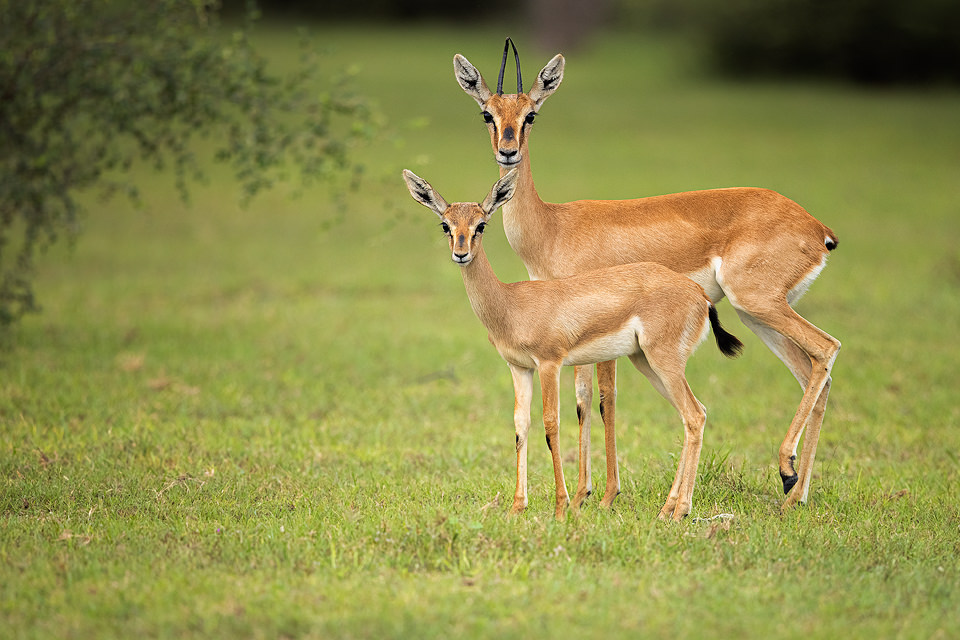Chinkara and fawn
Chinkara and fawn. A female Indian Gazelle with her fawn in thorny scrub habitat immediately after monsoon. Tal Chhappar, Rajasthan, India.
Tal Chhapar Wildlife Sanctuary is located in Northwestern Rajasthan on the fringe of the Great Indian Desert; The Thar. This small grassland habitat is surrounded by sparse scrub and dry dusty plains peppered with salt pans. Originally a hunting ground for the Maharaja of Bikaner it was declared a sanctuary in the 1960s.
India’s Grasslands are home to some of its most endangered species, many of which are endemic. This important habitat now only exists in a handful of places in India and is sadly becoming increasingly scarce.
This stunning grassland wasn’t always the paradise seen today. After decades of neglect and encroachment by the nearby salt production the sanctuary was in a sorry state. Thanks to efforts coordinated by Mr. S.S.Poonia, the range forest officer at Tal Chhapar, over the years the grassland has been transformed. After gradually stripping away the invasive plant; Prosopis juliflora a variety of grasses were planted such as Mothiya grass, a favourite of the blackbucks, which derives its name from ‘moti’ meaning pearl, as its sweet seeds look like pearls. The final result is vast swathes of pristine grassland bustling with animal life.
Chinkara and fawn – About the Chinkara
The chinkara (Gazella bennettii), or Indian gazelle, is a gazelle species found in arid regions of India, Afghanistan, Iran and Pakistan. In India Chinkara can be found in arid plains, deserts, dry scrub and lightly forested areas. Chinkaras are typically very shy and apart from in rare cases completely avoid human habitation.
You can find out more about Indian Gazelles here.
